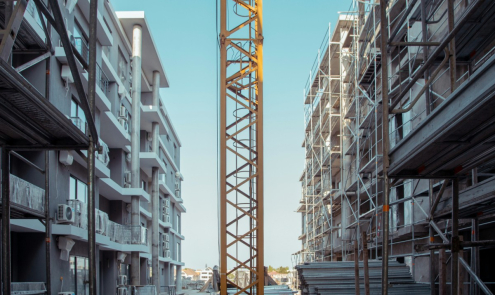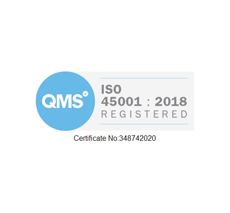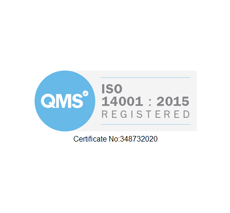The Comprehensive Guide to BREEAM Certification and How it is Revolutionising Sustainable Building Standards
29 Mar 2023
Ellen Huelin, Associate Director at international building services design consultancy, Whitecode, explores how the Building Research Establishment Environment Assessment Method (BREEAM), continues to be the world leading environmental assessment method and rating system for buildings.
As a qualified and licensed BREEAM Assessor and BREEAM Advisory Professional (AP) Ellen is happy to share the wealth of knowledge she has about the BREEAM certification process and how BREEAM has evolved since its inception more than 30 years ago.
What is BREEAM and what does it mean for sustainable buildings?
The Building Research Establishment (BRE) launched BREEAM in 1990. The aim of the method is to improve a building’s sustainability and environmental performance by evaluating it against a set of performance criteria. This ‘green’ building certification results in higher performing assets across the build environment lifecycle, from new construction to in-use and refurbishment. The rigorous assessment of an asset by a third party looks at the environmental, social and economic sustainability performance using the best practice standards developed by BRE. BREEAM schemes are updated on a regular basis but will always set higher standards than regulation demands, as the scheme aims for zero carbon.
BREEAM enables our clients to manage and mitigate the lifecycle impact of their building. This ‘whole life performance’ approach not only provides them with a sustainable building but a credible environmental label too. This has been shown to increase rental return and preserve/increase an asset’s value. Many of our clients are directed to BREEAM because of policy; we are seeing BREEAM increasingly adopted by local authorities which means the method becomes included as a planning condition. But we also have a number of clients who approach us looking to achieve a BREAAM rating and want to create a sustainable building. This demonstrates to me how impactful BREEAM has been in revolutionising sustainable building standards, much more so than any new government regulation.
Understanding the components of a BREEAM assessment
BREEAM provides a holistic sustainability assessment framework that measures sustainable value in a number of categories and validates the performance with third party certification. Each of the categories addresses a number of important factors including: - low impact design and carbon emissions reduction; design durability and resilience; adaption to climate change, and ecological value and biodiversity protection. BREEAM categories are: - management, water, energy, transport, health and wellbeing, resources, resilience, land use and ecology, pollution, materials, waste, and innovation.
The standards reflect the project types, the four main schemes are: - new construction; refurbishment and fit-out; in-use, and communities. Within those schemes it is broken down further, for example: - into offices, retail, care homes, health facilities and student accommodation. Each assessment is tailored to that building type and the scores or credits are weighted depending on how important each category is to the scheme overall.
For example, ‘management’ will look at the energy efficiency of the building in terms of monitoring energy and water use. It also covers efficient handover. ‘Health and wellbeing’ looks at how people are using a building so for example making sure there is enough daylight whilst ensuring there is no glare coming through the windows if it is an office building. Air quality is another area that can gain credits, making sure a building uses low VOC paint and the building has good ventilation can help gain an air quality certification which improves a building’s BREEAM score.
BRREAM assessors like myself are qualified and licensed to ensure assessments meet BREEAM quality and performance standards. Every assessment undergoes a quality audit check from the accredited third-party independent certification body, BRE Global Ltd, before a BREEAM certificate is awarded.
BREEAM is arguably one of the most robust environmental design assessment methods in the world today. Following updates to the Building Regulations in England for Energy (Part L) and Ventilation (Part F2) that came into force in June last year (2022) BRE released an updated version of BREEAM called version 6. It also impacted the ‘energy’ and ‘health and wellbeing’ categories within the BREEAM methodology. Version 6 has updated energy performance scales and updates to ventilation and air quality.
The updates ensure that BRE continues to push the boundaries and go beyond what the regulations call for. This is important to ensure that the sector continually evolves and improves so we can all enjoy sustainability benefits.
What are the benefits of obtaining a BREEAM certificate and what are the different types of BREEAM certification available?
The BRREAM rating enables compatibility between projects and provides assurance on an asset performance, quality, and value. By obtaining a BREEAM certificate you can demonstrate that you have used resources efficiently and have an energy efficient, healthy building, which means reduced costs. This can only increase the market value of your asset.
A BREEAM-certified rating reflects the score achieved by a project. There are a number of BREEAM certification types. The BREEAM ratings range from acceptable (in-use scheme only) to pass, good, very good, excellent and outstanding. A score of greater than or equal to 45% would give you a ‘good’ and two stars on your BREEAM certificate. A score of greater than or equal to 85% would give you a rating of ‘outstanding’ and five stars on your certificate.
There are extra credits that can be awarded for innovation to ensure that the sector continues to be rewarded for excellence striving for sustainability and environmental performance.
How to prepare for your BREEAM Certification Assessment
My top BREEAM preparation tip is to always bring us in right at the start of any project. On a new build we would bring in an ecologist, for example, so we can look to enhance the ecology of a site. As part of Whitecode we are able to carry out everything from energy assessments to thermal comfort modelling. MEP design is essential to ensure everything from lighting to leak detection is specified and is BREEAM compliant.
Some credits can only be achieved at the pre-planning stage and if they are not done, you will miss out on those credits completely. BREEAM isn’t an afterthought – it needs to be intrinsic to a project.
In 2018, BRE brought in material whole life cycle carbon assessments into its scheme to replace the Green Guide Rating section which had been quite crude and basic. Credits are awarded for not only the use of sustainable material but sustainable construction techniques too. Procuring materials with Environmental Product Declarations is rewarded showing that selection of material, especially with low embodied carbon, is now just as important as reducing energy demand. BREEAM push to achieve these standards sooner than Building Regulations and this can be seen by the Part Z proposal which is underway to regulate embodied carbon, this has been part of BREEAM since 2018.
Those who achieve a BREEAM rating are future proofing their assets because they know they are already going beyond what regulation demands.
If you are looking to start your journey towards achieving sustainability with BREEAM, please contact us today.

The Role of MEP Surveys in Cost Management...
MEP surveys are essential for assessing the condition and efficiency of mechanical, electrical, and plumbing (MEP) systems in buildings.
Read More
IS THE TRANSITION TO HEAT PUMPS WORTH THE...
As we contend with the global need to reduce carbon emissions and combat climate change, the UK government is introducing bold initiatives to transition away from fossil fuels. One such initiative is the ban on new gas boilers,...
Read MoreLike to Know More? Let's Talk...







